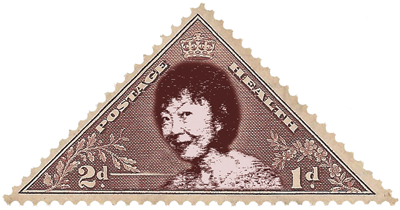Experience as Research: Cynthia Mayeda
This is part of the special section, Experience as Research.

My basic philosophy of grantmaking is: Keep the lens open as wide as possible. Thinking about the world as widely as possible and letting those observations influence your arts grantmaking will lead to richer, wiser, and more potent philanthropy. Tom Layton at the Wallace Alexander Gerbode Foundation operated with this approach. Because he had a wide lens, he could spot the exceptional and wasn’t hamstrung by others’ assumptions.
Paul Ylvisaker (at the Ford Foundation in the 1960s and dean of the Graduate School of Education at Harvard) was an outstanding philanthropist. I still get teary about him; he had the greatest influence on me. Paul gave a seminal speech at the Council on Foundations annual conference in 1987 titled “The Spirit of Philanthropy and the Soul of Those Who Manage It.” I’ll never forget the contents of the speech and the way the room felt when he finished. I never saw so many adults cry. He told us: “Maintain your sense of outrage!” I never forgot this advice. He urged us to have muscular ideas and ideals. I love knowing that I am one of thousands of acolytes of Paul Ylvisaker, all around the world.
I came to the arts through theater. I am a theater junkie. I hope I die in a theater seat. I “studied” theater as an undergraduate at the University of Minnesota, along with African American studies and women’s studies (and waited tables to put my former husband through school). After college I was hired by an entrepreneur to start a Photostat business. I knew nothing about Photostats or about business, but I did everything and I learned everything. After a few other jobs, I found my way into theater, first as a SAG and AFTRA agent for commercials, and then as a business manager, and then managing director of the Cricket Theater, a small company in Minneapolis (since closed).
Weeks into my job as the business manager of the Cricket, I was sent to a middle manager conference at the Foundation for the Extension and Development of the American Professional Theatre where I met Joe Melillo, who was a theater manager for FEDAPT. Through FEDAPT I met Suzanne Sato, Sam Miller, Barbara Janowitz, and dozens of other amazing professionals who have influenced my work.
One day Margaret Wurtele, senior program officer at the Dayton Hudson Foundation, called. I’m proud to say I never aspired to be a grantmaker, and I’m sure that’s why they called me. Dayton Hudson had been a big supporter of the theater, and the Cricket had been through several crises in three and a half years. I think Margaret thought I understood the complex world of nonprofit organizations and had ideas about how to make them work. My portfolio there was part arts and part social action.
Peter C. Hutchinson was vice president of the Dayton Hudson Corporation. His field was urban policy and public administration. He sent me to make site visits at places where I had to stand on tiptoe to get 10 percent of the conversation, like the Brookings Institution and the Institute for International Economics. I was overstimulated, but I love being the dumbest person in the room.
At Peter’s urging, I was promoted to managing director of the foundation, but I kept a grantmaking portfolio for twelve years, until my last day there. I never let the arts and social action go.
After leaving Dayton Hudson, I moved to New York and consulted with the Andrew W. Mellon Foundation and the NEA Dance Program, and I served as interim managing director at Crossroads Theater. This was the biggest education for me, and things I learned there inform my life today. At Crossroads, I learned what it is to feel safe as a person of color. Rick Khan had an extraordinary spirit that imbued every corner of the place — the work with actors, with audiences, with kids, with volunteers. I behaved differently when I was there. I could feel my breath going on forever. All the little pieces added up to something unique; they had something special.
Other artists have changed my life. Garland Wright (artistic director of the Guthrie Theater) was a great thinker, which showed up in his work and deeply influenced my grantmaking. He taught me that grantmaking can have an improvisational quality: it can be informed by the artistic process. Garland was always thinking outside his role, outside his field. I tried to use that approach in my work too. Elizabeth Streb makes voracious look lame. I am incredibly stimulated by that work. And always reminded about how hard it is to do it . . . to get all the pieces together: to formulate the ideas, array the talent, find the right spaces and the right sponsors, get all the money — to DO the work! And then to make it all so joyous! And Harvey Lichtenstein. From these three, and Ben Cameron, I have learned to truly see everything, all kinds of work, and to prejudge nothing.
In philanthropy, the power thing has gotten bigger and bigger, and foundations have fallen prey to bureaucratization. This trend may be a function of the increase in the number of claims for funds, but it is regrettable. I think we’ve lost some of the simplicity that is essential to good philanthropy — some of our original astonishment and capacity to be humbled by the work of artists.
